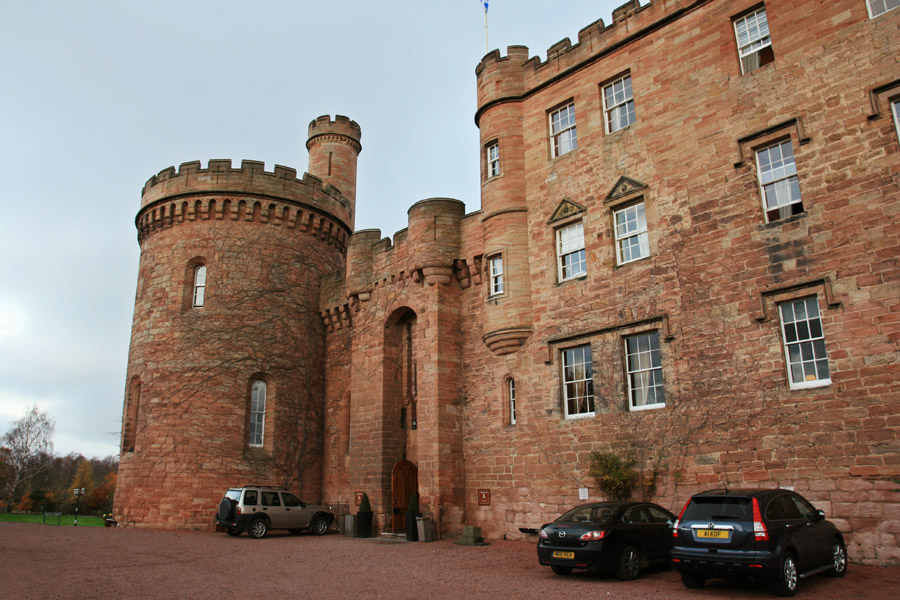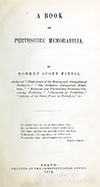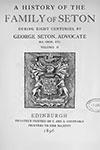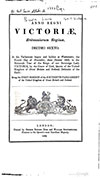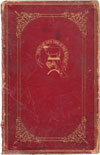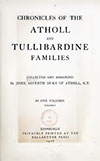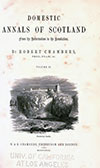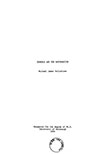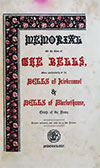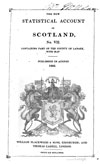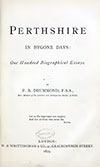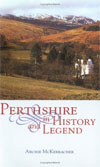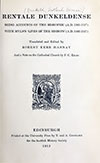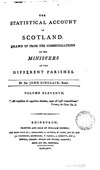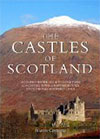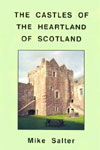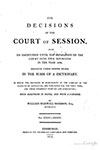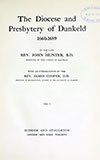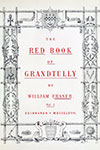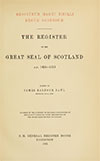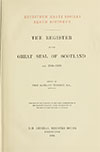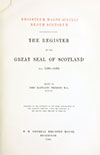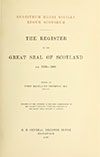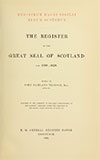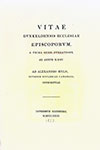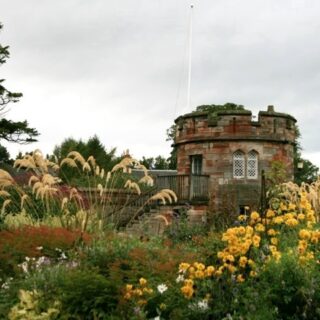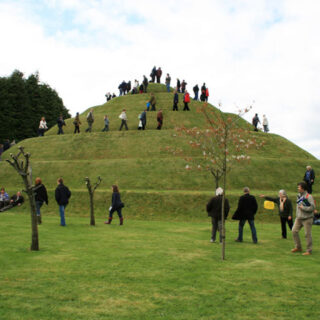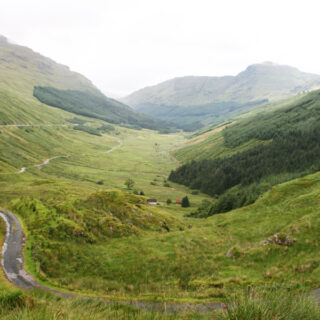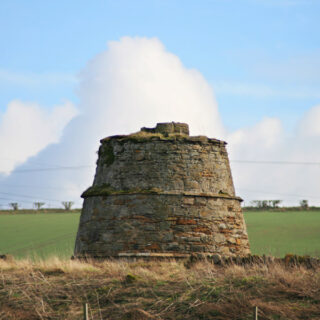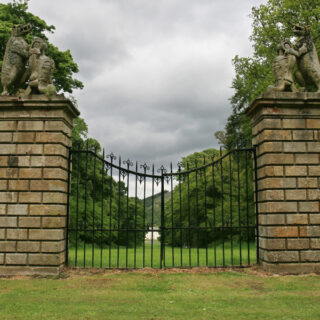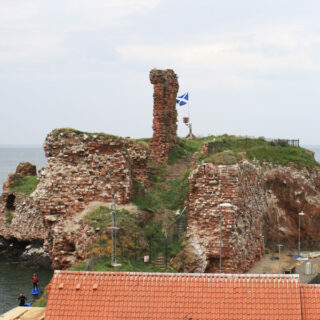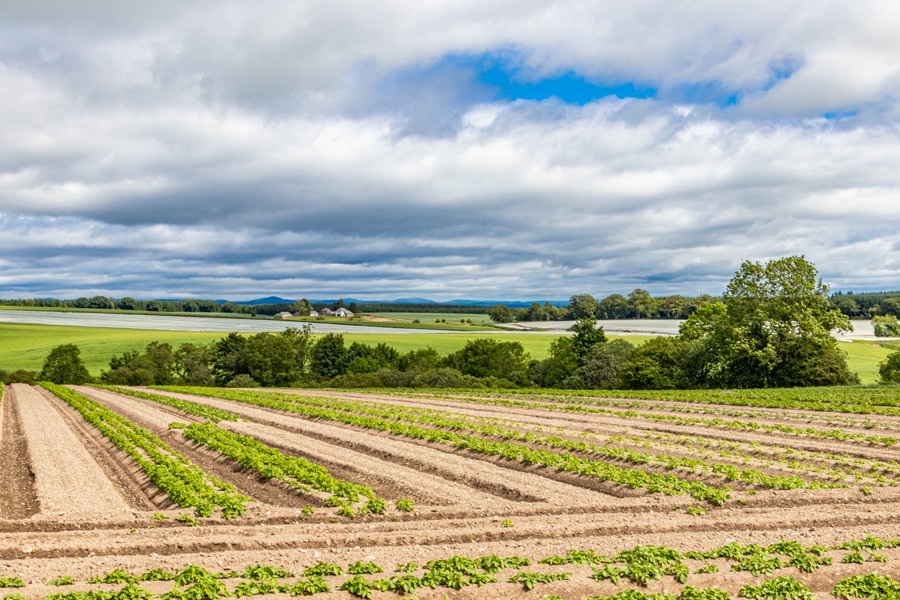

Kinvaid Castle is thought to have been built in the 15th century and features in no less than two traditional folk songs.
In 1449 George Seton of Seton and Longniddry, 3rd Lord Seton, granted lands on the east side of Longniddry, where John de Galaway used to live, to Katherine of Seton, second wife and widow of John Seton, 2nd Lord Seton, in exchange for the third part of the lands of Lowstoun and Kynwed.
The 3rd Lord Seton’s grandson, George, 4th Lord Seton, sold the lands of Monyvy, Lowstoun and Kynvaid to Robert Vaus, burgess of Edinburgh, in 1493. Four years later Vaus, also known as Waus or Waws, sold to George Brown, Bishop of Dunkeld, “for three years of the fruits of the Church of Cramond, the lands of Wester Kinvaid, Wester Lowstown and Easter Lowstown. These lands he mortified to the church, and got them united to the barony of Dunkeld”. The Bishop also owned the lands of Pittendynie and Kinvaid at this time. This transfer of the lands of Monivy, Lowstoun and Kinvaid was confirmed by James IV in a charter of 1497 and the following year the King confirmed Dunkeld Cathedral in the lands of Monivy, Loustoun and Kinvaid.
Bishop Brown was in conflict with Sir James Crichton of Strathord regarding the lands of Mukkersy which he had accepted for himself and the church, and Crichton is said to have made life difficult for the Bishop’s tenants whenever possible, “especially those of Pettindyny and Kynvaid.”
The Bishop built a castle on a wide ridge to the north of the Shochie Burn in order to protect his lands and tenants. Details of the Bishop’s household expenses at “Dunkeld, Clony, Kynwaid and Tullelum” survive from 1505 to 1514. These reveal that he kept a larder at Kinvaid where the carcasses of oxen were stored.
The lands or at least the farms of Kinvaid seem to have been rented out to tenants as in 1506 we find the “fermes of the lands of Westir Kinwaid and Loustons Estir and Westir, in the hands of the lady of Cowtye, sister to my Lord, quod liberum tenementun, and in the hands of Thomas Retray and his spouse”. In 1512 the “fermes of Ovir Petcarn and Kinvaid” seem to have been rented by Thomas Rettray or Rattray’s widow.
The Rattrays seem to have been part of the Bishop’s extended family as in 1513 and 1514 the Bishop’s niece, Matilda Johnesoun or Johnson, widow of Sir John Retray of that Ilk, was described as the lady of Kynwaid. In 1514 John Stewart, son of Sir John Stewart of Stowixis, abducted Matilda from Kinvaid but her fate is unknown.
Bishop Brown died in 1515 and John Stewart, 2nd Earl of Atholl, pushed for his brother, Andrew Stewart, to be made Bishop. Andrew Stewart was elected but he failed to secure confirmation from the Pope and ultimately Gavin Douglas, son of Archibald, 5th Earl of Angus, became the new Bishop.
In 1560 the unnamed lairds of Kinvaid and Airntully were ordered by Archibald Campbell, 5th Earl of Argyll, James Stewart, 1st Earl of Moray, and William Ruthven, later 1st Earl of Gowrie and 4th Lord of Ruthven, to “to pass incontinent to the Kyrk of Dunkeilden and tak doon the haill images thereof, and bring furth to the Kirk yaird, and burn them oppinly. And siclyk cast doon the Altaris, and purge the Kyrk of all kinds of monuments of Idolatyry.” That is to purge Dunkeld Cathedral of all idolatrous statues. The lands of Kinvaid were feued to John Rattray in 1561.
A Rattray of Kinvaid, possibly John, was charged in 1571 for his involvement in a local dispute between the Oliphants and the family of Ross of Craigie. Laurence Oliphant, 4th Lord Oliphant, was involved in a disagreement with a branch of the family of Ross of Craigie which resulted in the death of James Ross, son of the late Thomas Ross of Maitlands. Friends and relatives of the deceased, including Rattray of Kinvaid, set out to Oliphant’s seat at Dupplin in search of revenge.
In 1573 John Rettray de Kinvaid witnessed a charter from Sir Andrew Murray of Balvaird and Arngask to his future wife, Margaret Crichton, daughter of John Crichton of Strathord. John Rattray of Kinved witnessed another charter in 1581.
By 1584 the owner of the lands of Kinvaid was Sir Patrick Crichton of Strathord and around the same year William Ireland of Milnhole, now the neighbouring property of Millhole, murdered John Crichton of Kinvaid and Innernytie, an act commemorated in a ballad:
There were seven Oys into Milnhole,
It was weel kend the evil did,
Dippin’ their hands in the innocent bluid
O’ gentle John Crighton, the laird o’ Kinvaid.
The Rattrays were also still referred to as “of Kinvaid” at this time, however this may be due to the properties of Kinvaid and Wester Kinvaid being separate, as seemingly was the mill of Kinvaid. In 1593 John Rettray of Kinved, his eldest legitimate son, Patrick Rettray, and Patrick’s wife, Katherine Murray, exchanged various lands in Perthshire with James Drummond de Cairdneis and his wife, Elizabeth Robertson.
The church at Dunkeld seems to have retained the superiority of the lands of Kinvaid even after the Reformation as in 1614 Alexander Lindsay of Evelick, Bishop of Dunkeld, granted to Alexander Ireland, minister of Kinclaven, lands around Pittendynie, including the mill of Kinvaid, which Patrick Rattray, his wife and others had resigned.
In the mid-17th century John Crichton’s daughter and co-heiress, Mary Crichton, married Sir William Stewart, second son of Sir William Stewart of Grandtully, and Kinvaid had passed into the Stewart family by 1649.
This would appear to be at odds with a suggestion that the Bell family owned Kinvaid in the mid-17th century. According to tradition Bessie Bell, daughter of the laird of Kinvaid, and her friend, Mary Gray, daughter of Patrick Gray of Lynedoch, were killed by the plague.
The tradition of the country relating to these ladies is, that Mary Gray’s father was laird of Lednock, and Bessie Bell’s of Kinvaid, a place in this neighbourhood: that they were both very handsome, and an intimate friendship subsisted between them: that while Miss Bell was on a visit to Miss Gray, the plague broke out, in the year 1666; in order to avoid which, they built them- selves a bower, about three quarters of a mile west from Lednock-house, in a very retired and romantic place, called Burnbraes, on the side of Beanchie-burn. Here they lived for some time; but the plague raging with great fury, they caught the infection (it is said) from a young gentleman, who was in love with them both. He used to bring them their provision. They died in this bower ; and were buried in the Dranoch-haugh, at the foot of a brae of the same name, and near to the bank of the river Almond. The burial place lies about half a mile west from the present house of Lednock.
Archaeologia Scotica, Volume 2
Edinburgh, 1822
This is believed to have happened in 1645, when nearby Perth was afflicted by the plague, rather than 1666 when there were no reports of the disease in Scotland. Their tragic fate was commemorated in the folk song “Bessie Bell and Mary Gray”, also known as “The Twa Lassies O’ Bessie Bell and Mary Gray”, the first verse of which is:
O, Bessie Bell and Mary Gray,
They were twa bonnies lasses,
They biggit a bower on yon burn brae,
And theekit it ower w’ rashes.
Note that there is no mention of Kinvaid. These four verses were later added to, and later still Allan Ramsay composed a new song which only retained the first four verses.
However there doesn’t appear to be any evidence, beyond the ballad, for the Bell family being proprietors of Kinvaid in the 17th century, it seemingly being owned by the Stewart family before and after this event. A few versions of the song substitute Kinnaird for Kinvaid but the Bells don’t seem to have owned any of the various Kinnaird properties in the 17th century, and besides the proximity of Kinvaid to Lednock makes the story more compelling.
Some sources state that the oldest version of the song refers to Bessie Bell as Mary Gray’s cousin. Patrick Gray married twice, both times to women named Janet Blair so the niece can’t have been from his wives’ sides of the family. I haven’t been able to ascertain if Patrick had any sisters who married Bells. Interestingly one of Mary Crichton’s sisters may seemingly have been called Isabell and I wonder if that could have been corrupted to Bessie Bell or perhaps even have been a nickname.
Upon Sir William’s death in 1672 his son, John Stewart of Innernytie, was retoured heir to his father in the lands of Innernytie, Mains of Kinclaven, Airliewright and others. John died of fever in 1680 and was succeeded by his son, also John, who in 1686 had sasine, as heir to his grandfather, Sir William Stewart of Innernytie, of the lands of Kinvaid, Lostounes, Quhuythills, Wester Kinvaid or Catheldrum, Craighead and Argeith “in the barony of Dunkeld”.
In 1726 the grandfather of a David Smith of Methven, more of whom later, became proprietor of the lands of Kinvaid, however the lands were sold in 1765 to the surgeon Dr. Thomas Young, later Professor of Midwifery at Edinburgh University. Dr. Young died in 1783 and in the same year Kinvaid was marked on Stobie’s map as “Castle in ruins” next to an L-plan building.
The estate of Kinvaid was bought by John Murray, 4th Duke of Atholl, in 1784 from the trustees of Dr. Thomas Young for £8050 and became part of the “Bisset’s District” of the Duke’s estates. Kinvaid was the subject of legal action in 1789 when David Smith of Methven, the grandson of the aforementioned proprietor, brought a court case against the trustees of Dr. Thomas Young. The lands of Kinvaid had anciently been thirled to the mill of Drumsay, that is to say the owner of the lands of Kinvaid was compelled to mill their corn at Drumsay. When the lands of Kinvaid were sold to Dr. Young no mention of the thirlage had been made.
In 1804 Captain James Stewart, brother of Stewart of Fincastle, was a tenant of Kinvaid and he was appointed factor to the Duke of Atholl in 1816. A deed of entail by the 4th Duke to his heirs in 1817 included “all and whole the Town Lands and Barony of Kinvaid, with the Tower, Fortalice, Yards, Orchards, Parts, Outsetts, Annexes, Connexes, and Pertinents whatsoever lying with in the Barony of Dunkeld”.
Upon the 4th Duke’s death in 1830 the estates of Strathord and Kinvaid went to his son and heir, John Murray, 5th Duke of Atholl. The following year Kinvaid Castle was marked on Knox’s map as being in ruins.
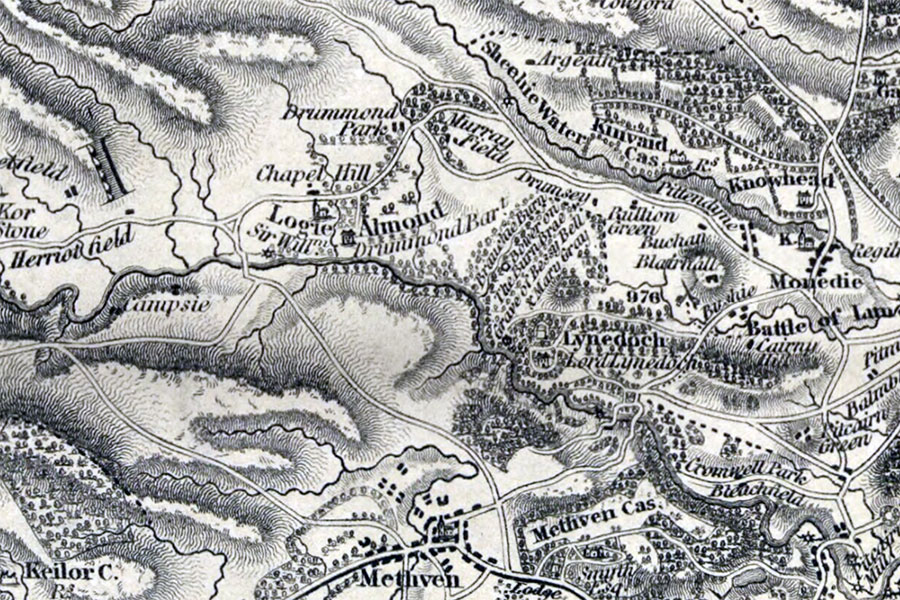
James Knox, Edinburgh, 1831image courtesy of NLS
The New Statistical Account, published in 1837, states that several years ago “a few vestiges remained of the old castle of Kinvaid, which are now completely removed” and by 1864 the Six inch Ordnance Survey map of the area records the “Site of Kinvaid Castle”.
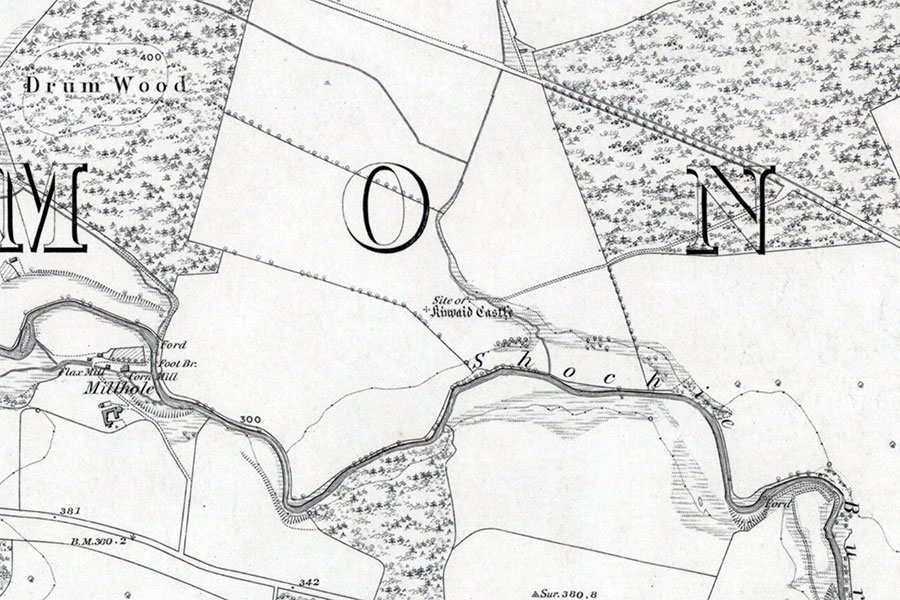
Ordnance Survey, 1867image courtesy of NLS
The site of Kinvaid Castle now lies within a field to the north-east of Millhole farm.
Alternative names for Kinvaid Castle
Kingvade; Kinved; Kinwaid; Kynvaid; Kynwaid; Kynwed
